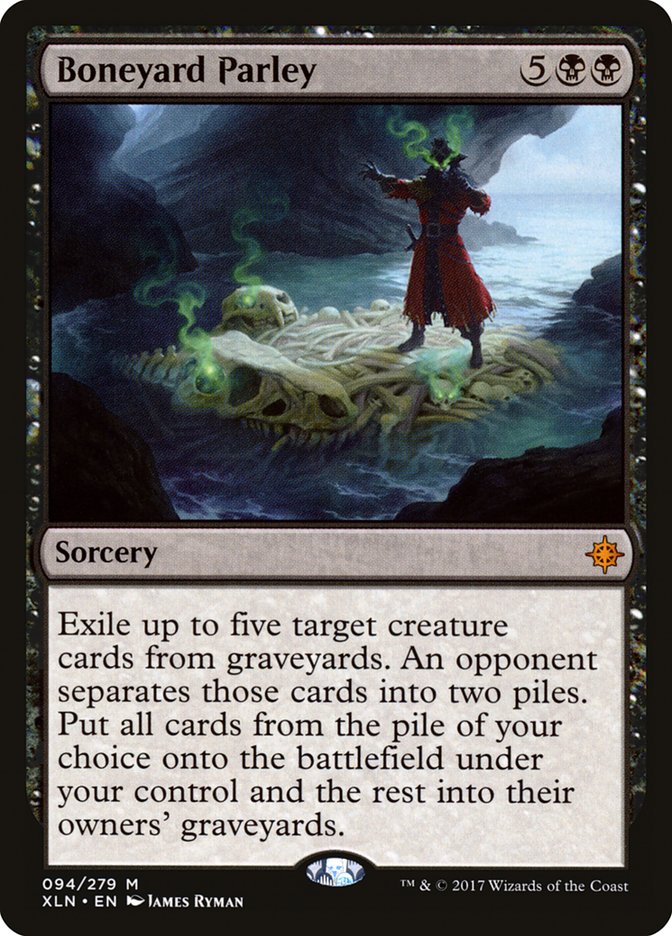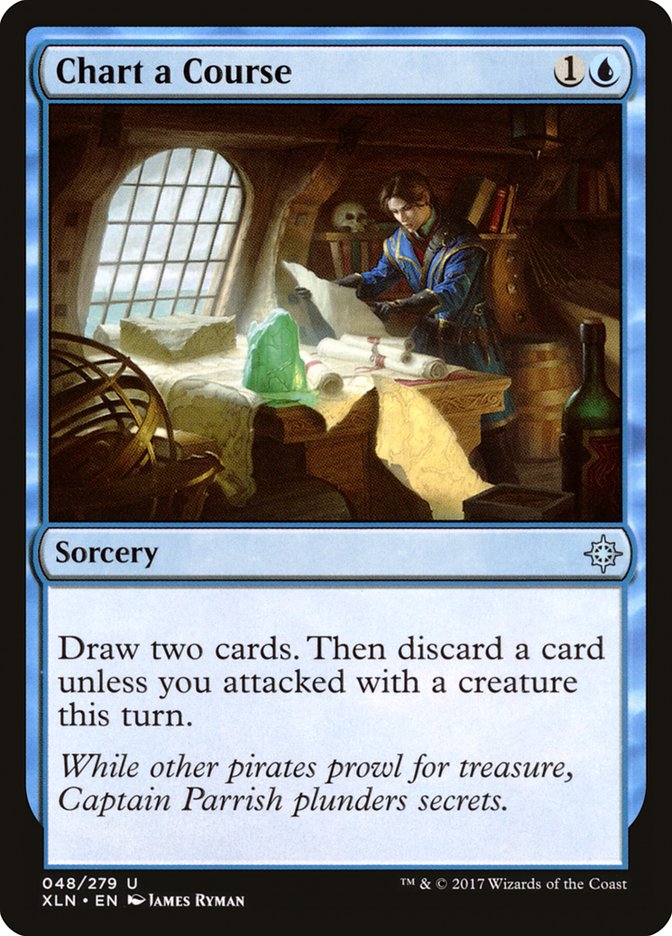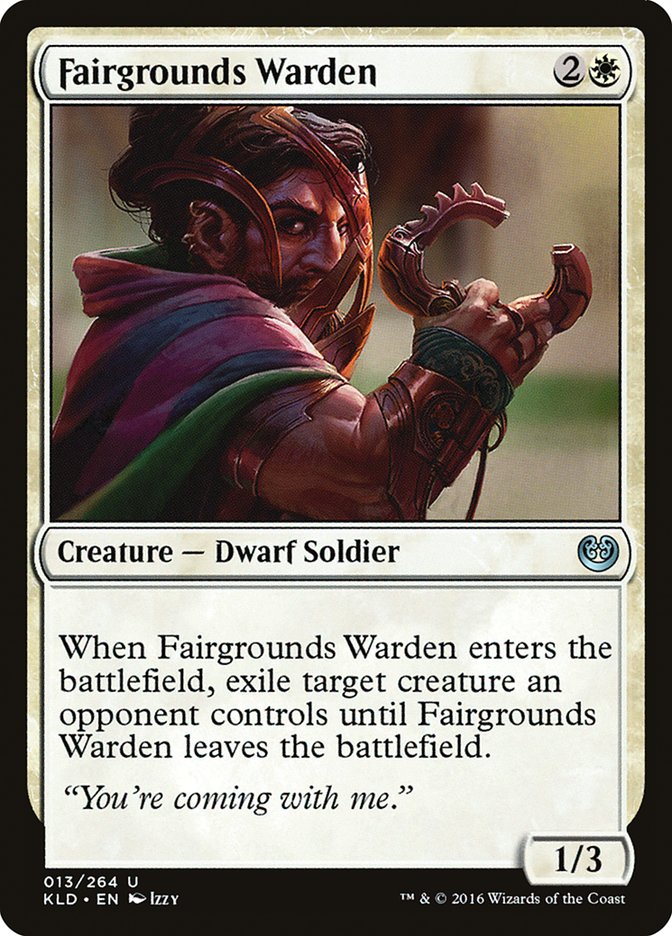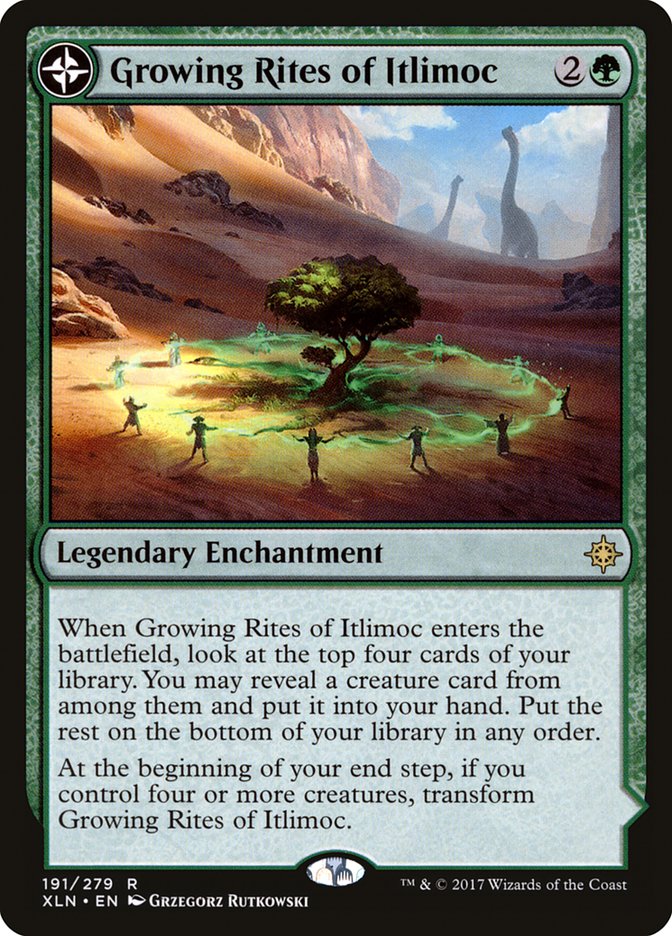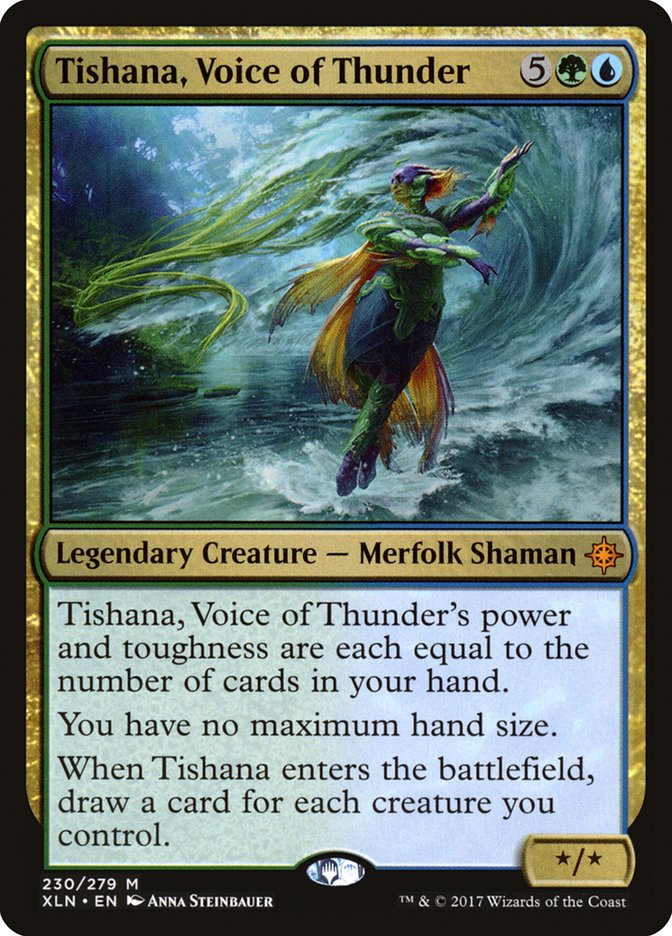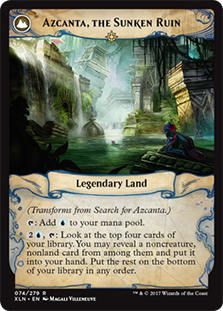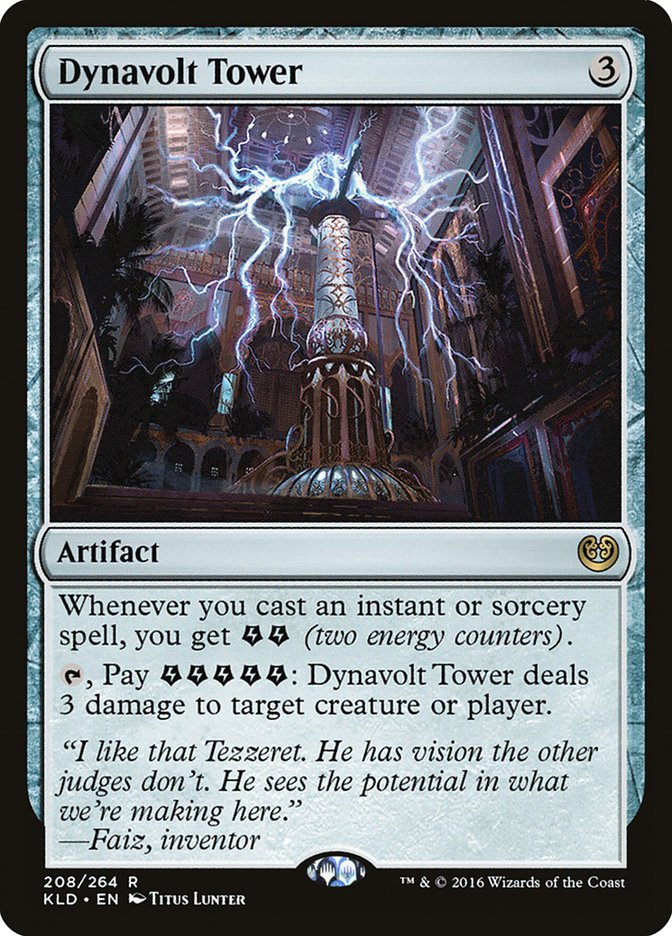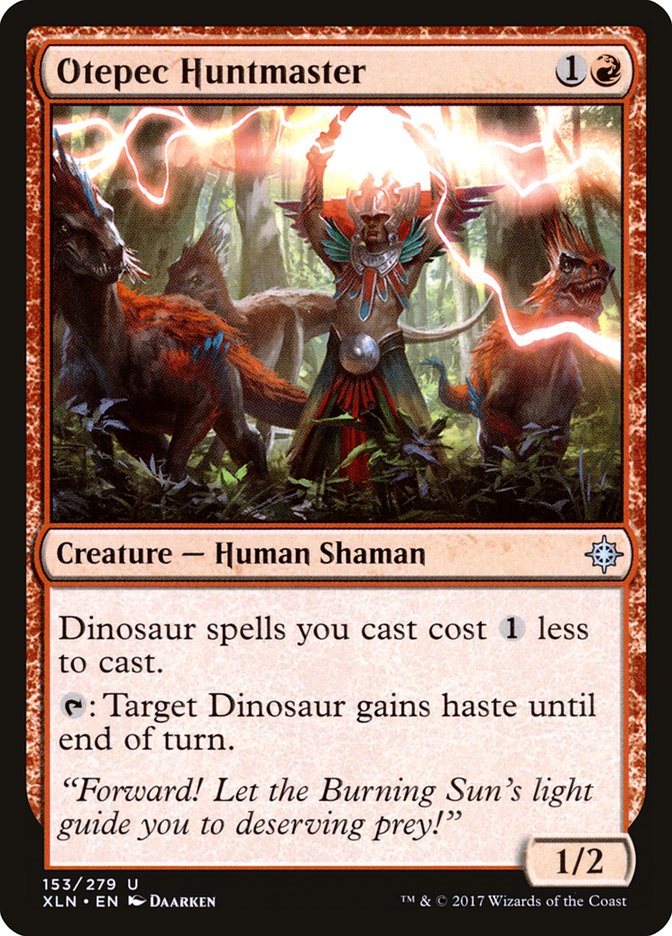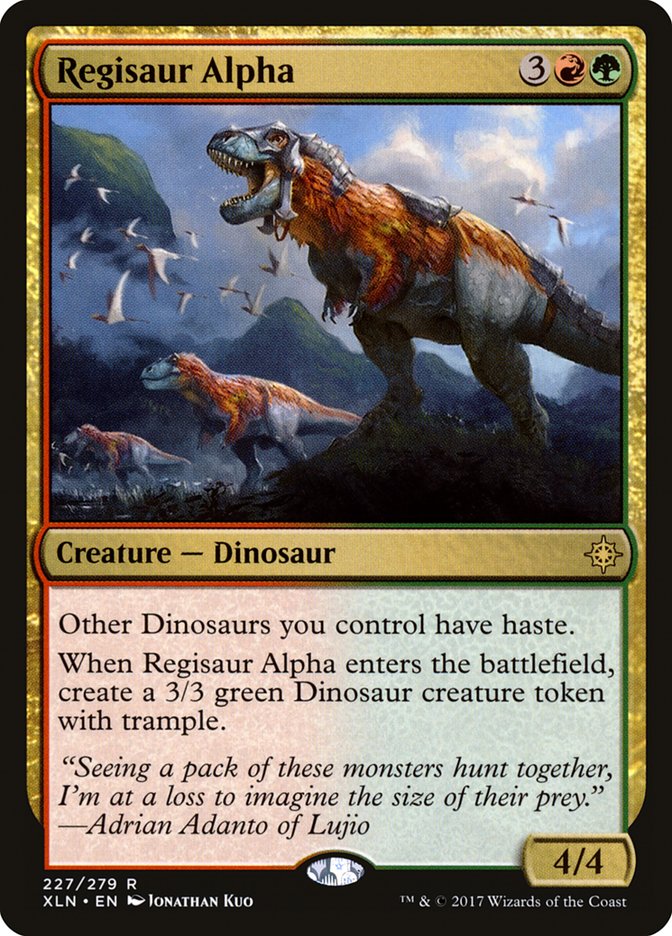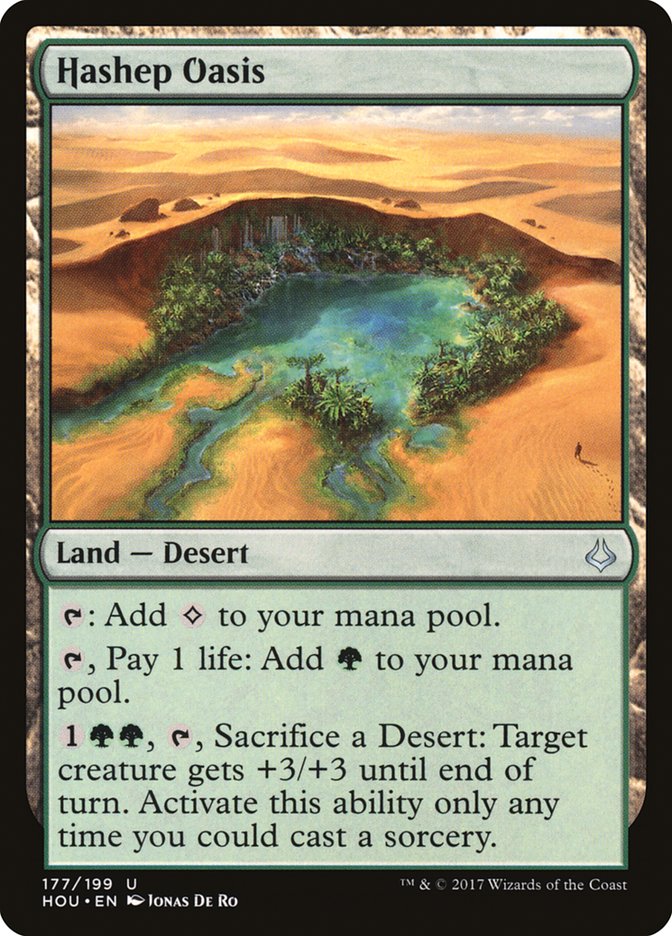Over the last couple of weeks, I’ve covered the cards and decks from Ixalan that appear to have the most promise. Of course, sometimes the best stuff ends up being tough to find. In order to get there, you’ve got to explore what’s possible in a format.
Let’s start by putting all the sweet cards into one deck!
Creatures (25)
- 1 The Scarab God
- 3 Champion of Wits
- 3 Hostage Taker
- 2 Daring Saboteur
- 2 Ruin Raider
- 4 Ripjaw Raptor
- 4 Siren Stormtamer
- 2 Kitesail Freebooter
- 4 Merfolk Branchwalker
Lands (24)
Spells (11)

There’s obviously some tension here between Kitesail Freebooter, Siren Stormtamer, Lookout’s Dispersal, and Grim Captain’s Call. Are we trying to stop their removal spells or get back our creatures for value? The various looting effects let us do both, but is that good enough?
Splashing for a two-drop and Ripjaw Raptor might not seem like the best choice, and maybe all we want is some amount of March of the Drowned and The Scarab God in the sideboard of a regular Pirate deck. Shrug. You could take the deck in a Grixis direction with Rampaging Ferocidon as your Dinosaur, but then there aren’t any great Merfolk left. As is, this Sultai manabase ain’t great.
Grim Captain’s Call is incredibly powerful with a high ceiling. It has a prohibitive mana cost and deckbuilding restriction, plus the effect it provides might not be relevant in the format. It’s something that could end up being worth it down the line, though.
Creatures (14)
- 1 Demon of Dark Schemes
- 3 Noxious Gearhulk
- 2 The Scarab God
- 1 Razaketh, the Foulblooded
- 4 Champion of Wits
- 3 Hostage Taker
Planeswalkers (4)
Lands (23)
Spells (19)
- 2 Strategic Planning
- 4 Opt
- 3 Fatal Push
- 2 Vraska's Contempt
- 2 Walk the Plank
- 2 Boneyard Parley
- 4 Chart a Course
Sideboard

This deck was secretly killing it on Magic Online just before rotation. It featured Ever After instead of Boneyard Parley, which looks like a downgrade, but this deck could end up being pretty good overall. It’s doing powerful things, and those things tend to go a little bigger than most midrange decks. You always have the option of sideboarding into a low-mana-curve U/B Control deck to fight Ramunap Red also.
Chart a Course is going to be huge in creature decks and graveyard decks, and this is just one of the many examples. This is also one of the few decks I’ve found where I truly want Opt, although I’m sure there will be plenty of those too. Having such cheap sources of velocity could potentially alter deckbuilding to some degree. For example, maybe I don’t need six reanimation spells because I’m going to see plenty of cards on average per game.
I cut a land, but that might be wrong. This deck can’t really afford to miss a land drop and I’d rather spend my cantrips digging for action than digging for lands when I’ll typically need to be using that mana to survive early, not spin my wheels. Since the allied-colored decks have to play the cycling lands in order to fix their mana, there’s another reason you should probably be playing more lands instead of fewer.
Casting a large Boneyard Parley seems like a ton of fun, and while putting giant Demons on the battlefield is nice and all, I wouldn’t mind choosing between things like Hostage Taker and Champion of Wits either. Having excellent creatures you can cast early and use defensively goes a long way toward making sure your Boneyard Parley is actually lights out. Noxious Gearhulk and The Scarab God are both perfect fatties for reanimating while also being reasonable finishers themselves.
Creatures (27)
- 4 Angel of Invention
- 4 Fairgrounds Warden
- 3 Metallic Mimic
- 4 Mavren Fein, Dusk Apostle
- 4 Duskborne Skymarcher
- 4 Legion Conquistador
- 4 Adanto Vanguard
Lands (23)
- 19 Plains
- 4 Shefet Dunes
Spells (10)
Sideboard

Is this the mythical Vampire deck to come out of Ixalan? Honestly, I’m not sure.
There are some strong options in black, and certainly staying in-tribe makes things like Metallic Mimic more powerful. Realistically, though, Vampires are pretty good at going wide but could use some help. Angel of Invention and Shefet Dunes are the answer, and Oketra’s Monument plays incredibly well with both of them.
Trial of Solidarity is a worthwhile inclusion for the more aggressive go-wide decks, but especially with Legion’s Landing pretending to be Knight of the White Orchid, we should have no problem getting to Angel of Invention instead. As I mentioned, Metallic Mimic is a reasonable option, but not a great one unless you are playing two colors to get all the Vampires. As is, we need a two-drop, and I wasn’t happy with the idea of Glory-Bound Initiate or Aviary Mechanic.
The best white removal spell is Fairgrounds Warden. Most players have criticized white for lacking in removal, and that feeling is absolutely valid, but if you can build with Fairgrounds Warden, that alleviates your issue. Cast Out is fine, but you need something to defend yourself in the early game, and Fairgrounds Warden does exactly that while also synergizing with the rest of your deck.
Creatures (31)
- 4 Night Market Lookout
- 4 Glint-Sleeve Siphoner
- 1 Yahenni, Undying Partisan
- 4 Dread Wanderer
- 3 Ammit Eternal
- 4 Fathom Fleet Captain
- 4 Ruin Raider
- 3 Kitesail Freebooter
- 4 Vicious Conquistador
Lands (22)
Spells (7)
Sideboard

This one actually looks good.
You have twelve one-drops that attack for two, which is a great start. Black has arguably the second-best removal suite in the format (behind red) and solid creatures at every point on the curve. There are also eight ways to draw cards thanks to Glint-Sleeve Siphoner and Ruin Raider. There’s not a lot of synergy that might necessarily draw you into the archetype, but that’s not the end of the world. Sometimes all you need to do is attack them, kill their stuff, and draw some cards.
One of the biggest questions is how this deck would fare against Ramunap Red, and to a lesser extent Temur Energy. Red aggro typically dominates black aggro, but that wasn’t what we saw last season with Zombies versus Ramunap Red. This black deck is much different and doesn’t have nearly the staying power that Zombies did.
The black deck is typically the one taking the controlling stance in the matchup due to the cards each deck has available, but that’s going to be completely different here. Mono-Black Aggro has to be the aggressor, mostly because it’s not capable of playing the control game. Duress is an amazing tool against both Ramunap Red and Temur Energy because all you’re trying to do is clear the way. Either you go wide and hope to nab their Sweltering Suns or take out their lone spot removal spell for a high-value threat like Ammit Eternal or Ruin Raider.
Ruin Raider is one of the best cards in the set, and it’s either going to find a home here, in U/B Pirates, or in B/G Energy.
My podcast partner Bryan Gottlieb mentioned that his view on Tishana, Voice of Thunder changed when he started thinking about it as a Regal Force instead of a Merfolk. It’s a good way to go about things, as it doesn’t isolate your thinking and opens the door for more possibilities.
Since it was previewed, I’ve been brainstorming ways to utilize Growing Rites of Itlimoc.
Creatures (27)
- 4 Angel of Invention
- 4 Fairgrounds Warden
- 3 Rishkar, Peema Renegade
- 3 Walking Ballista
- 4 Channeler Initiate
- 3 Tishana, Voice of Thunder
- 2 Ranging Raptors
- 4 Merfolk Branchwalker
Lands (24)
Spells (9)

Sram’s Expertise plus Growing Rite of Itlimoc is beautiful in most ways, but not without its awkward moments. It skips the whole “Growing Rites is a bad deal at three mana” part of the equation, plus it gets you very close to transforming almost immediately. You could, in theory, cast Tishana, Voice of Thunder on turn 4.
In order for this strategy to succeed, you can’t be all-in on Growing Rites of Itlimoc plus a mana sink. In a normal game of Magic, you might get to Tishana, Voice of Thunder mana organically, but it’s difficult. I recommend trying to find another mana accelerator to play alongside Growing Rites of Itlimoc so that casting Tishana, even if it’s not on turn 4, becomes closer to reality.
Since we’re playing a pile of creatures already, Rishkar, Peema Renegade looks like the best option. It doesn’t hurt that some of your creatures, like Walking Ballista and Merfolk Branchwalker, will typically have a +1/+1 counter on them. Rishkar and Channeler Initiate don’t get along, though.
Angel of Invention is the bridge between Growing Rite and Tishana, and it does a fine job at making your other creatures more useful, including the dinky tokens from Sram’s Expertise.
Creatures (28)
- 4 Whirler Virtuoso
- 4 Servant of the Conduit
- 2 Rishkar, Peema Renegade
- 4 Rogue Refiner
- 4 Walking Ballista
- 2 Oasis Ritualist
- 4 Tishana, Voice of Thunder
- 4 Merfolk Branchwalker
Lands (21)
Spells (11)

Whirler Virtuoso is one of the best cards you can combine with both Growing Rites of Itlimoc and Tishana, Voice of Thunder.
Creatures (31)
- 4 Longtusk Cub
- 3 Fairgrounds Warden
- 3 Rishkar, Peema Renegade
- 4 Walking Ballista
- 4 Sacred Cat
- 4 Regal Caracal
- 2 Adorned Pouncer
- 4 Pride Sovereign
- 3 Tishana, Voice of Thunder
Lands (24)
Spells (5)

Cats are dope.
Creatures (27)
- 4 Verdurous Gearhulk
- 4 Winding Constrictor
- 3 Rishkar, Peema Renegade
- 4 Walking Ballista
- 3 Hostage Taker
- 3 Herald of Secret Streams
- 2 Ruin Raider
- 4 Merfolk Branchwalker
Lands (24)
Spells (10)

There are going to be many viable B/G decks and something like this will likely be one of them.
The energy package is still powerful and Attune with Aether is basically the best mana fixer in the entire format, so you need a good reason to play green without it. I ramped up the +1/+1 counter theme to enable Herald of Secret Streams, which could make a huge impact if the format is about midrange ground stalls.
Even with Attune with Aether, getting double black for things like Grasp of Darkness was always a pain in the low-land-count B/G decks. This deck still has some Walk the Planks, but it’s very fortunate that something like Hostage Taker exists. It allows you to fight for the battlefield while still applying pressure and that’s going to be huge.
Ruin Raider is excellent, but this B/G deck’s curve isn’t low enough to support all four copies. Additionally, it’s not uncommon for B/G to want to take a defensive stance in some matchups, so you don’t necessarily want cards that are only good when you’re the beatdown. Running two copies maindeck with additional copies in the sideboard seems right unless you want to significantly lower your curve.
Creatures (2)
Lands (22)
Spells (36)

Maybe Temur Tower is still better, but this version has an easier time against Hazoret the Fervent and Ripjaw Raptor.
Did you know that Azcanta, the Sunken Ruin can find a win condition in Dynavolt Tower?
That interaction is really sick and makes me consider Search for Azcanta in decks without Torrential Gearhulk. Finding Approach of the Second Sun is nice and all, but the white defensive cards are severely lacking.
Vraska’s Contempt is a solid control tool that gives you some much needed lifegain while also providing a clean answer to Hazoret. U/B Control is still a possibility, but the weakness to artifacts and Ramunap Red is clearly an issue, whereas this deck solves those issues to some degree.
Finally, let’s be real. Dinosaurs are the most fun in Ixalan.
Creatures (26)
- 3 Walking Ballista
- 1 Rhonas the Indomitable
- 2 Carnage Tyrant
- 2 Gishath, Sun's Avatar
- 4 Regisaur Alpha
- 4 Ripjaw Raptor
- 4 Drover of the Mighty
- 4 Ranging Raptors
- 2 Otepec Huntmaster
Lands (22)
Spells (12)

This deck is sweet and the one I’ve been working on the most. It starts with developing some mana and midrange creatures. If you have the opportunity, you can take advantage of Enrage when it’s convenient, but you shouldn’t go out of your way to get value. That could be the wrong way to go about things in some matchups, but most of the time, you should try to kill your opponent first and get value second.
That said, it’s not uncommon to develop, cast a Walking Ballista for two or three, and start pinging your Ranging Raptors once the battlefield stalls. At that point, you’ll have enough mana to cast bigger Dinosaurs or bigger Ballistas. Despite not really looking like it, this deck scales well into the late-game.
Otepec Huntmaster is the better mana accelerator in a vacuum, although there are only a few matchups where you’re actually the beatdown. The real issue is when you start including things like Walking Ballista, Rhonas the Indomitable, and sideboard planeswalkers because you want something that adds mana for things that aren’t Dinosaurs. Because of that, Drover of the Mighty gets the nod over Otepec Huntmaster.
I started with four Rile and four Savage Stomp, but they are situational enough that I’m fine with shaving on them, at least for now. Obviously you want Enrage activators basically as much as possible, since that’s part of your engine leading into the middle and later stages of the game, but you can’t afford to flood on them. Samut, the Tested and Huatli, Warrior Poet are reasonable activators, but are lacking. Raging Swordtooth might actually be the best activator, although, while it might overperform against Ramunap Red and Vampires, it’s poor in the mirror. If the mirror is about Rhonas the Indomitable, Huatli, Warrior Poet becomes even stronger, since she’ll give you a nice Falter effect.
Are we supposed to play Regisaur Alpha or Glorybringer? Given that Carnage Tyrant and Gishath, Sun’s Avatar are the premier threats in the format, I’m tempted to say no to Glorybringer. Carnage Tyrant is much better when it has haste, and while we could shift back to Otepec Huntmaster, I’ve already outlined why I don’t think that’s possible. If Gishath isn’t finding other Dinosaurs with its ability, it’s a lackluster card, so that’s another strike against going off tribe. I’m sure a Glorybringer / Ripjaw Raptor deck exists and is good, but with the way this deck is constructed, I don’t think Glorybringer belongs.
Hashep Oasis is one of those cards that doesn’t get played enough but adds a little bit of value that can help you close games. Since this deck is all about attacking with (sometimes trampling) giant animals, getting the extra Lava Spike can go a long way. If you’re trying to pressure a planeswalker, Hashep Oasis can force bad options for your opponent. While only Gishath, Sun’s Avatar and Carnage Tyrant have trample, remember that Rile gives trample too!
Next week: What I would play at #SCGDFW.


